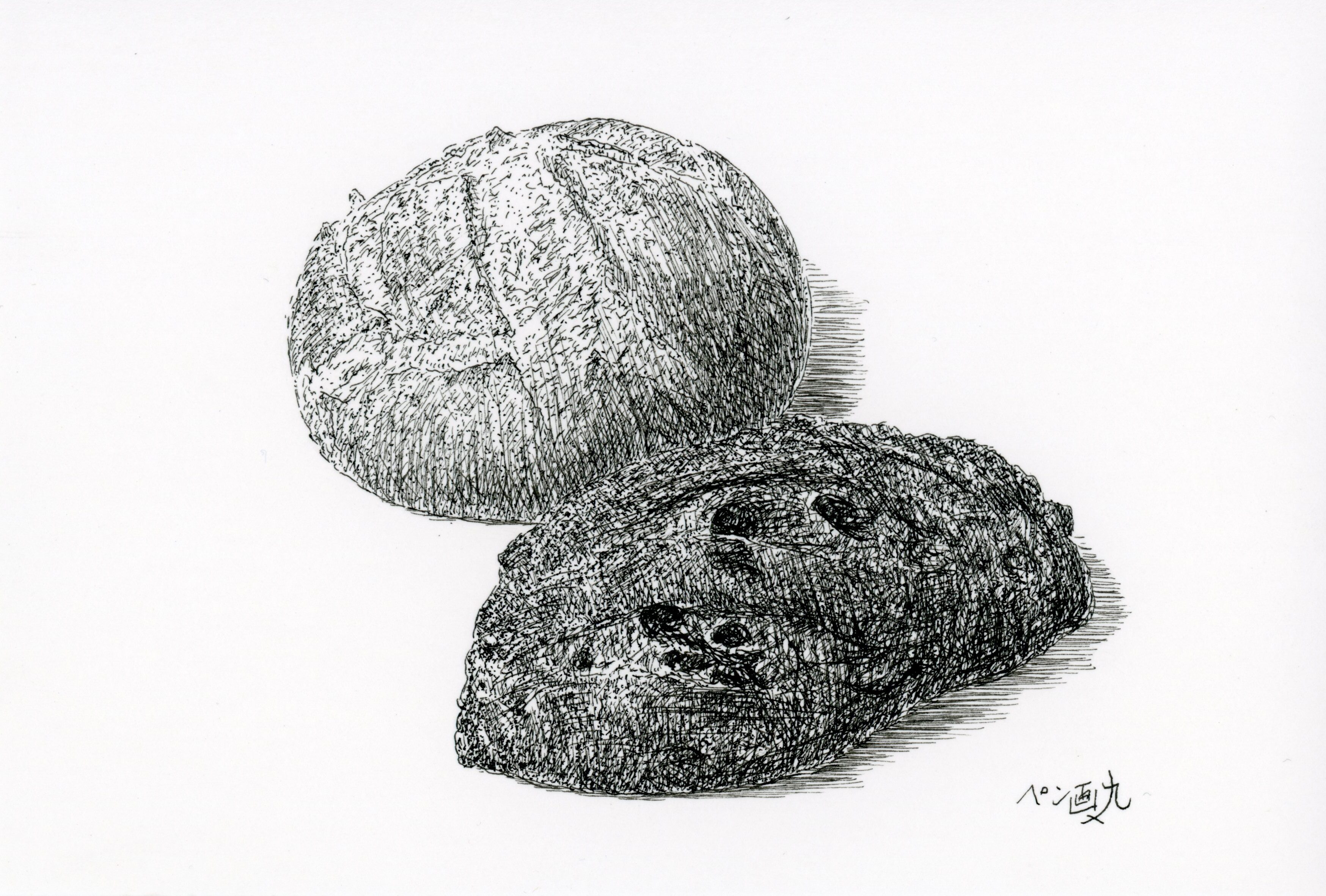Types and Characteristics of Pens
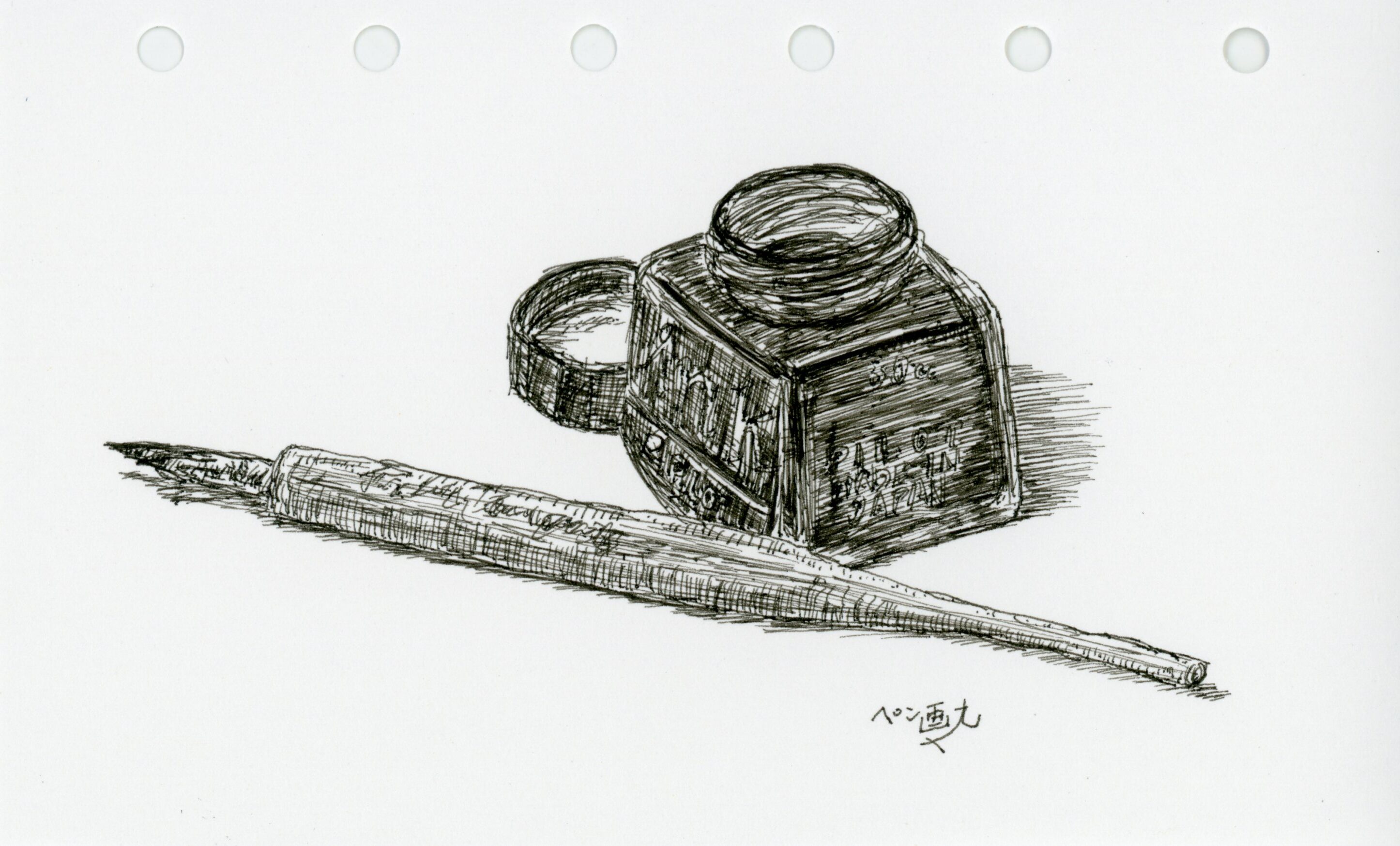
Types and Characteristics of Pens Used in Pen Drawing
Introduction
Hello, I am Pengamaru, a pen drawing artist. In this article, I will introduce in detail the types and characteristics of “pens” used in pen drawings.
What is Pen Drawing?
Pen drawing is a form of art that uses pens to create illustrations. It requires only a few tools, such as pens, ink, and paper, allowing for a wide range of expressions, from simple illustrations and outdoor sketches to highly realistic detailed drawings. While easy to start, it has a profound depth of artistic expression.
Types of Pens Used in Pen Drawings
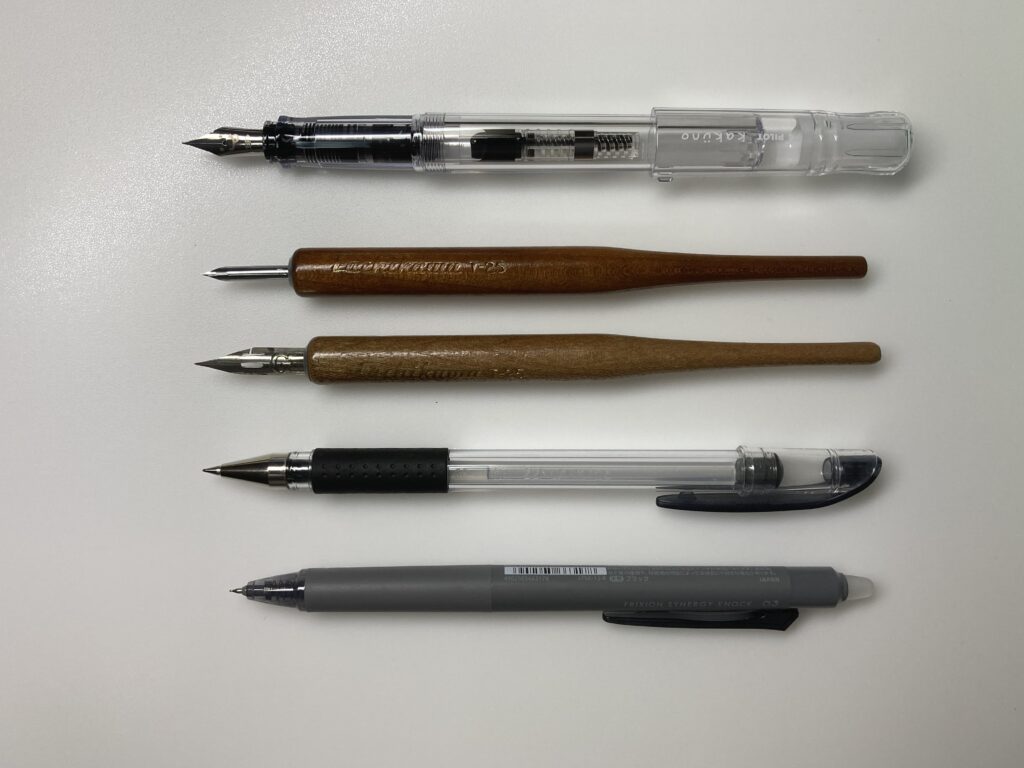
There are various types of pens used in pen drawing. Here, I will introduce the pens I use.
Pens in the Image (from top to bottom):
- Fountain Pen EF (Extra Fine)
- Maru Pen
- G Pen
- Gel Ink Ballpoint Pen
- Erasable Ballpoint Pen (Frixion)
- Dip Pen
Dip Pen
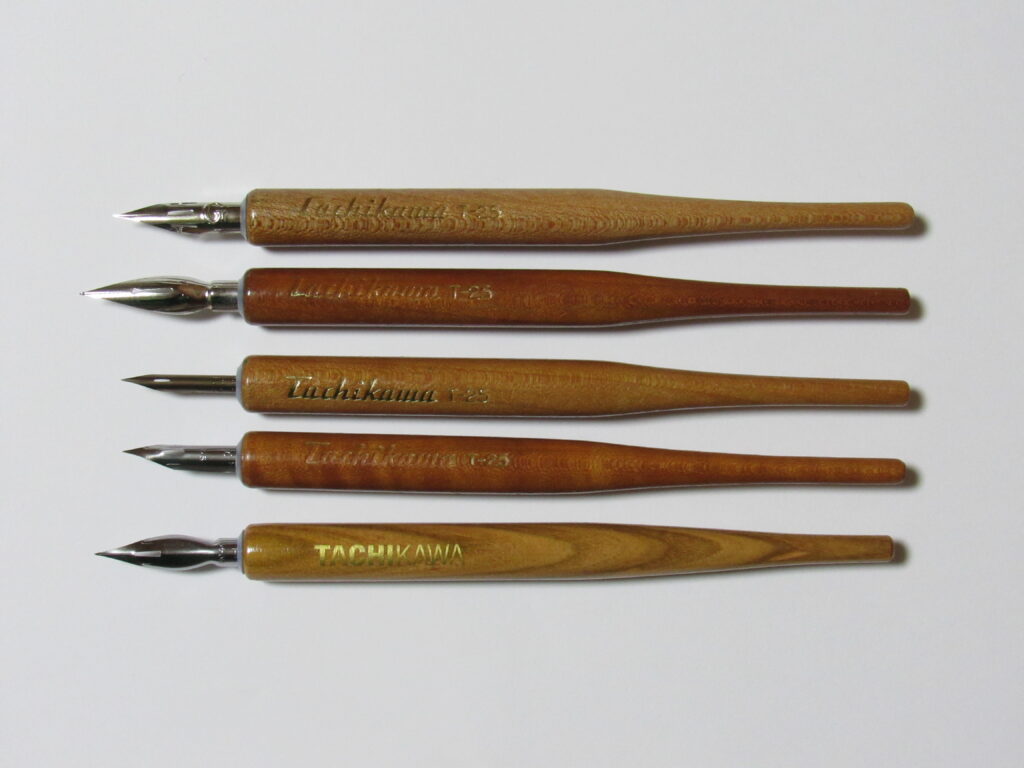
A dip pen is a pen that requires dipping its nib into ink before use. If too much ink is applied, it may drip, so it is best to dip only about one-third of the nib into the ink.
Types of Dip Pens:
- G Pen
- Kabura Pen (Spoon Pen)
- Maru Pen
- School Pen
- Nihonji Pen (Japanese Character Pen)
Advantages:
- Various nib types can be used
- Allows for easy variation in line thickness with pen pressure
- Compatible with different types of ink
Disadvantages:
- Requires frequent ink dipping
- Not portable
- Nibs wear out quickly
Maru Pen
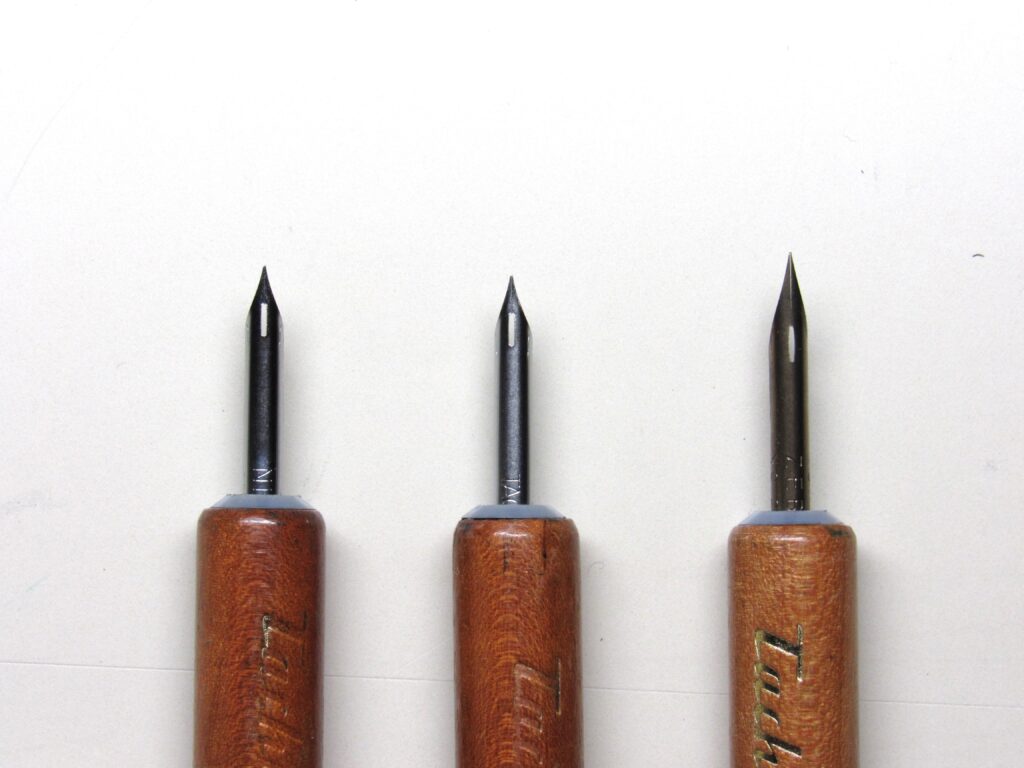
The Maru Pen is a dip pen nib that produces fine lines. Originally used as a mapping pen for drawing maps, it is excellent for detailed expressions and is frequently used for backgrounds in manga and for drawing delicate hair in shojo manga.
Characteristics:
- Ideal for detailed pen drawings
- Can create thicker lines with added pressure
- Allows for expressive line variation
Artworks created using Maru pens
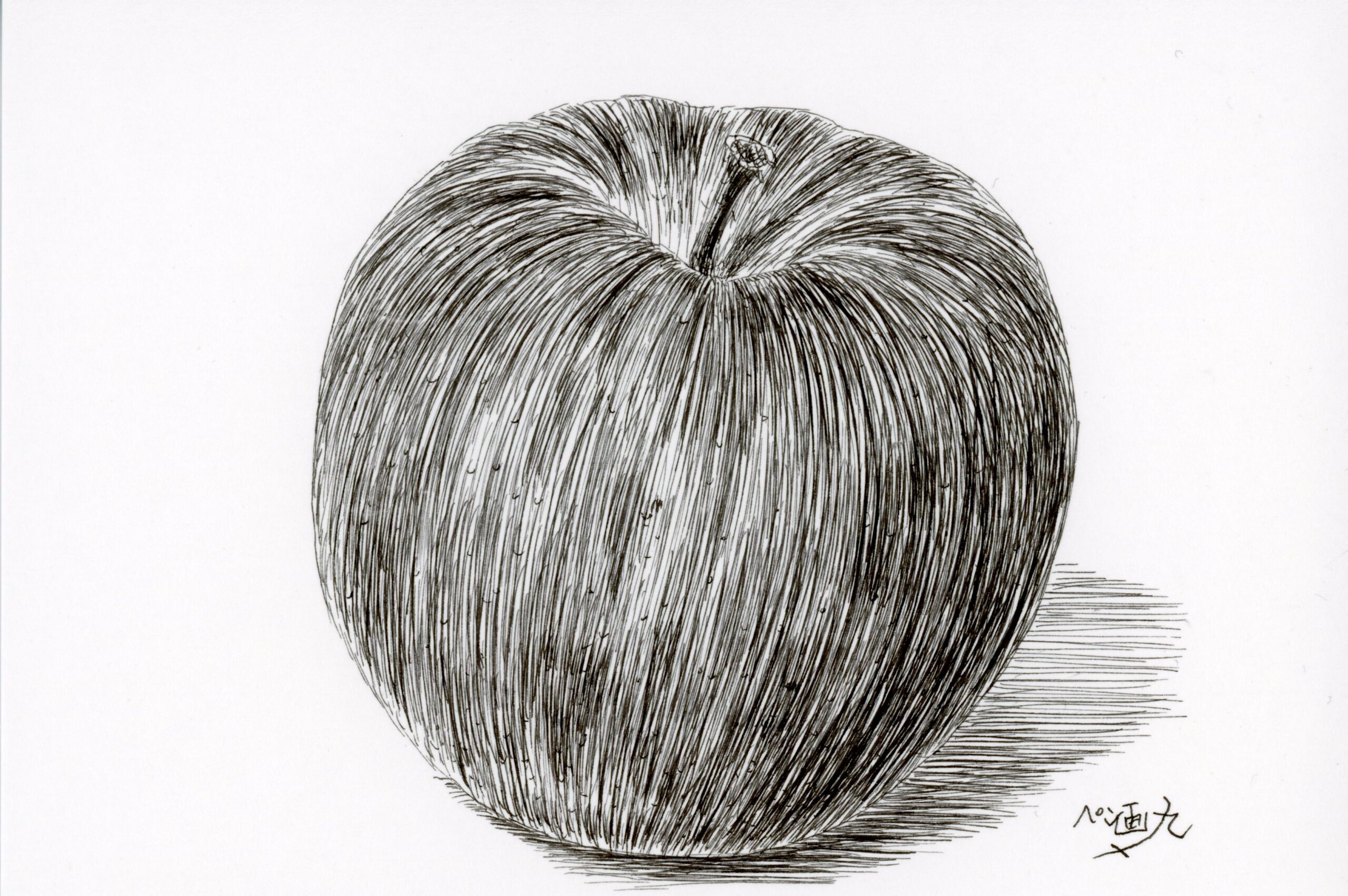
G Pen
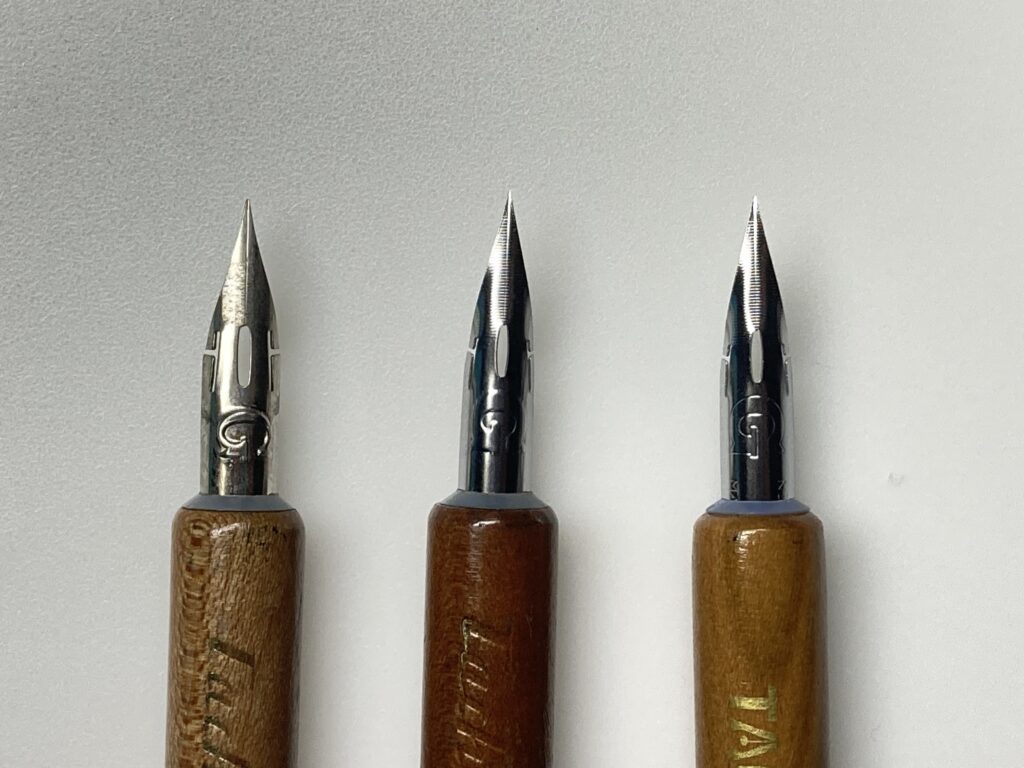
The G Pen is the most commonly used nib for manga drawing. It has a slit on the side that allows the tip to spread easily with light pressure, making it simple to adjust line thickness through pen pressure.
Characteristics:
- Allows for easy adjustment of line thickness with pen pressure
- Versatile for various expressions
- Ideal for manga and illustrations
Artworks created using G pens
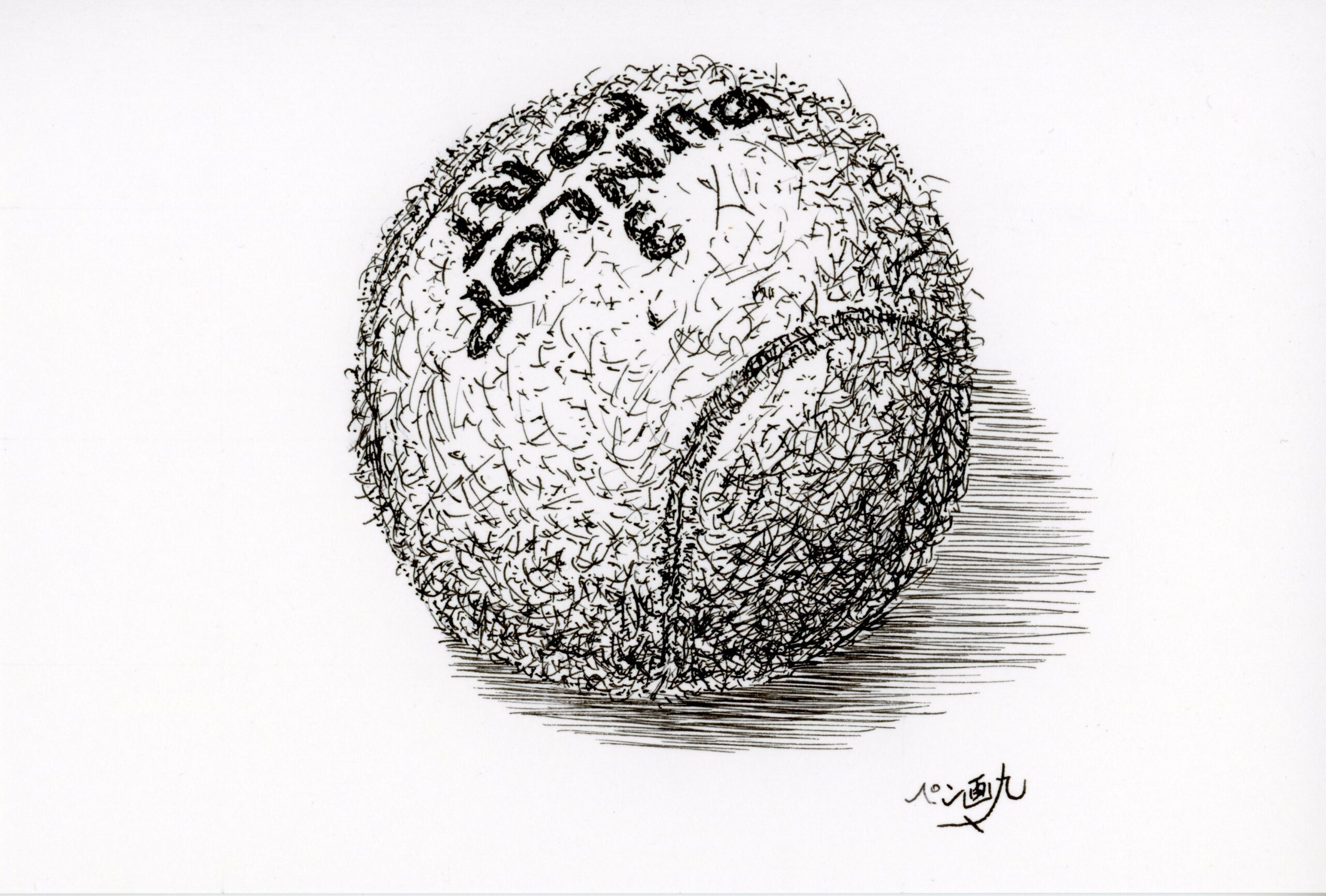
Kabura Pen (Spoon Pen)
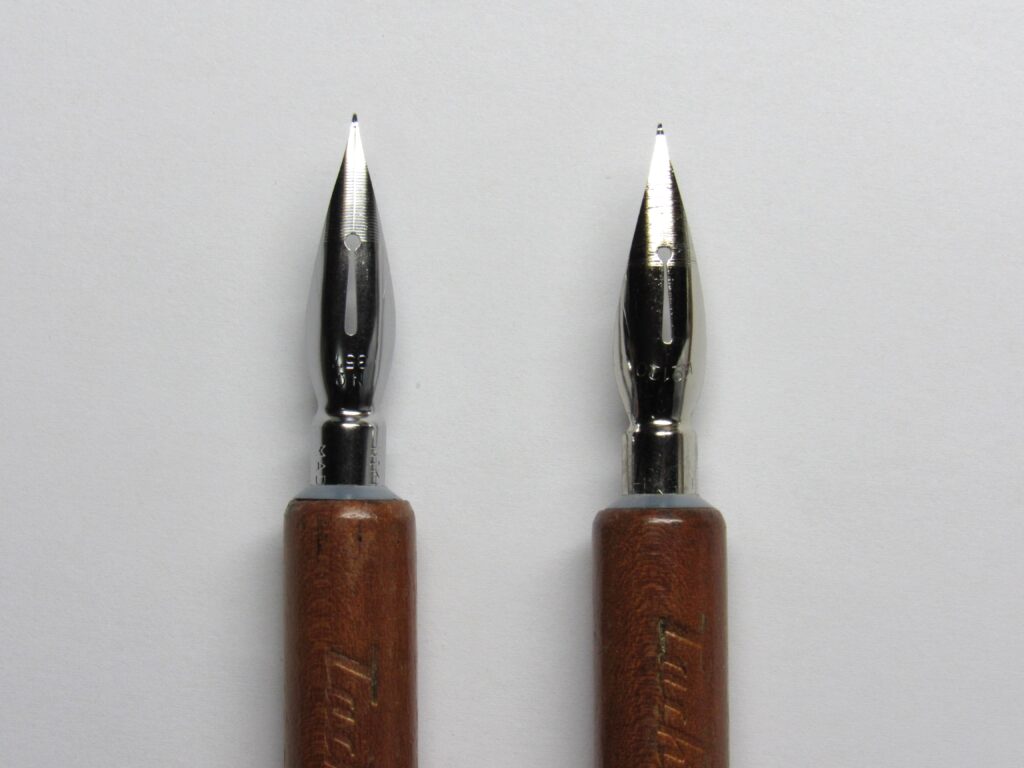
The Kabura Pen is named for its resemblance to the kabu (turnip) vegetable. Also called a Spoon Pen, it was originally designed for writing English letters but is now widely used in manga and illustrations.
Characteristics:
- Hard nib, making it difficult to vary line thickness with pressure
- Suitable for drawing uniform lines
- Also good for writing text
Artworks created using Kabura pens
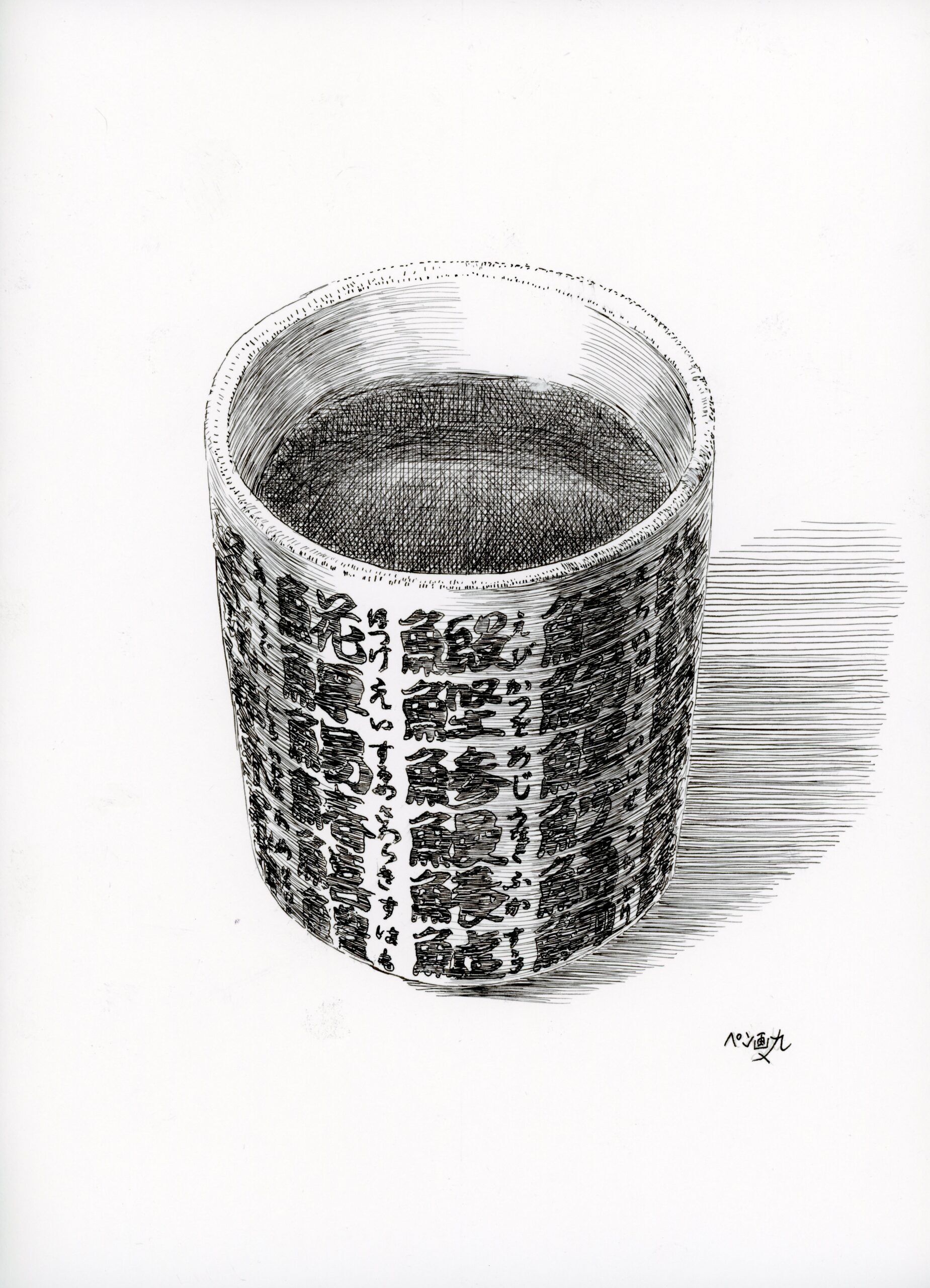
School Pen
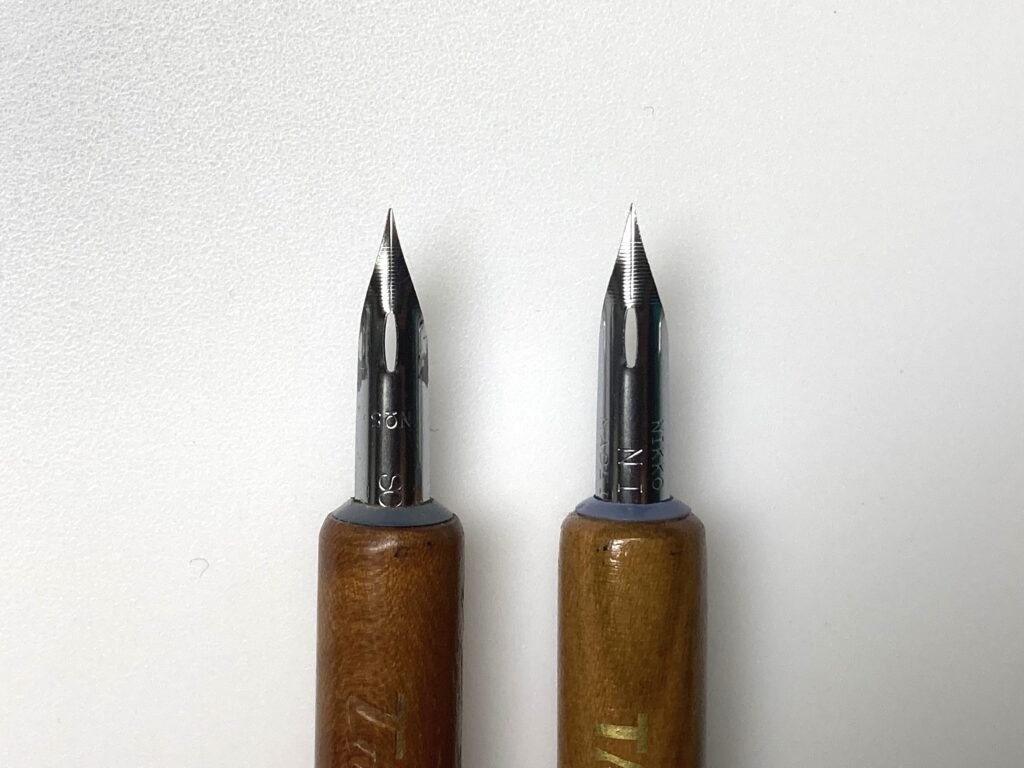
The School Pen was originally designed for educational purposes, such as bookkeeping and document writing. It has a firm nib that produces consistent thin lines, making it suitable for writing.
Characteristics:
- Suitable for drawing uniform lines
- Ideal for educational settings
- Good for bookkeeping and document writing
Artworks created using School pens
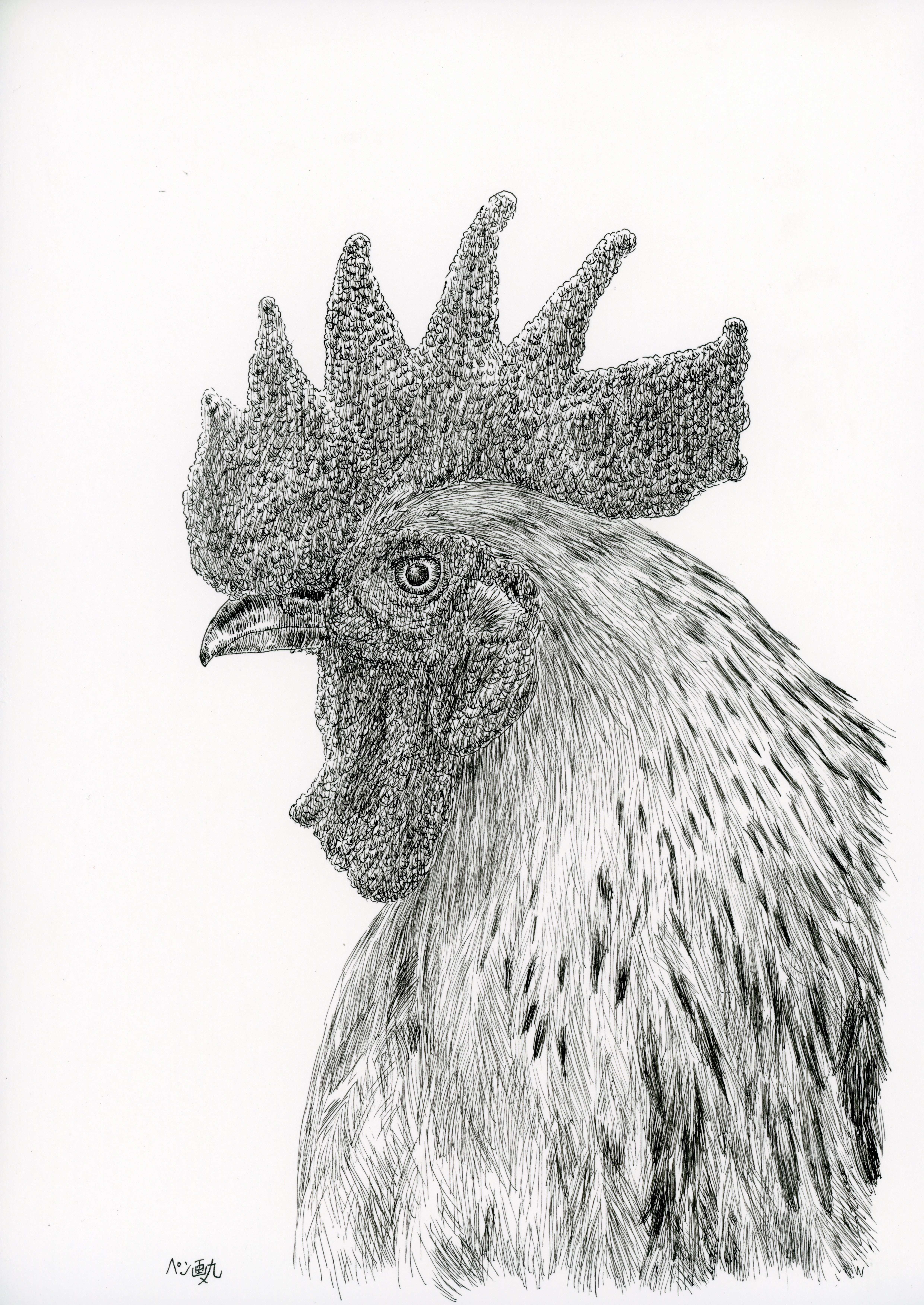
Nihonji Pen (Japanese Character Pen)
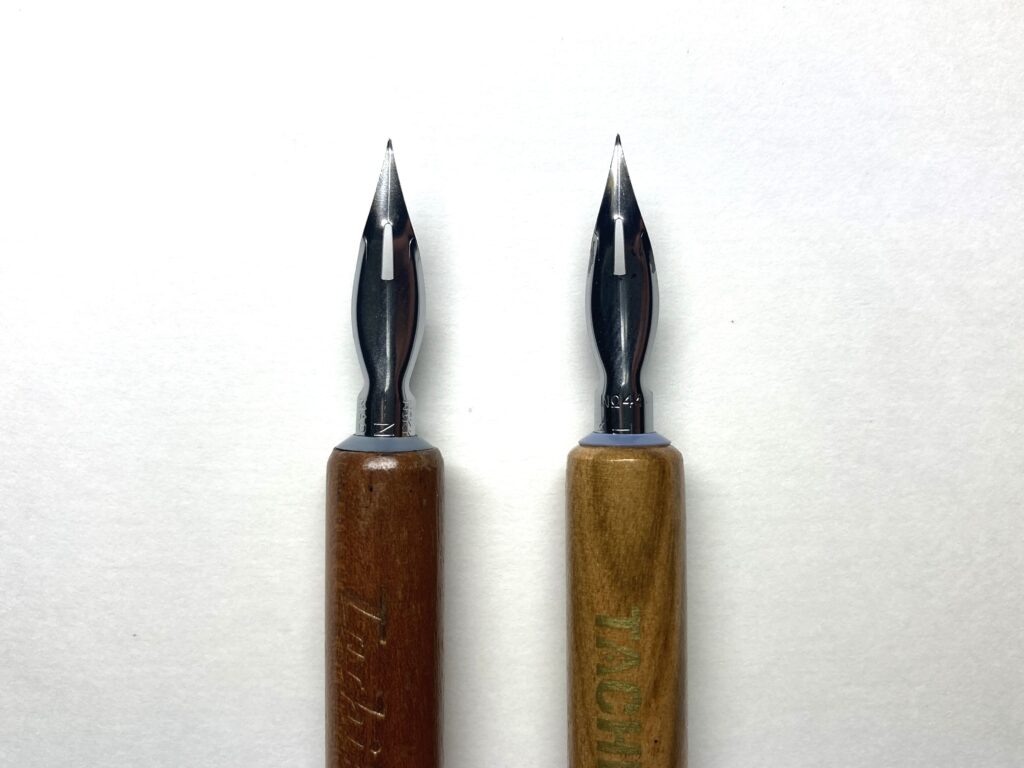
The Nihonji Pen is specifically designed for writing Japanese characters. It is also widely used for drawing manga and illustrations, as it accommodates the delicate brush-like strokes of Japanese writing.
Characteristics:
- Ideal for writing Japanese characters
- Suitable for manga and illustration
- Good for pen calligraphy
Fountain Pen Dip Nibs
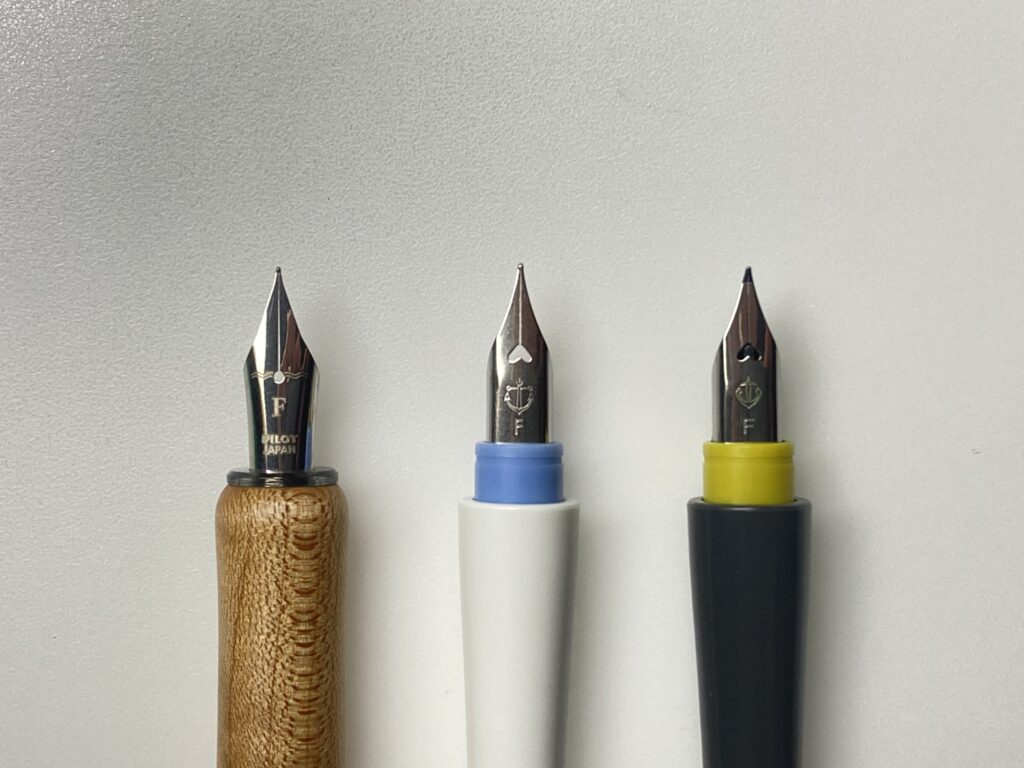
Fountain pen nibs can also be used as dip pens, allowing users to enjoy the smooth writing experience of a fountain pen without an internal ink reservoir. Unlike standard fountain pens, these dip pens allow for quick ink color changes and are easy to clean, making them ideal for those who want to use multiple inks simultaneously.
Characteristics:
- Smooth writing experience
- Durable nib points resistant to wear
- Difficult to create line variation with pressure
Fountain Pens
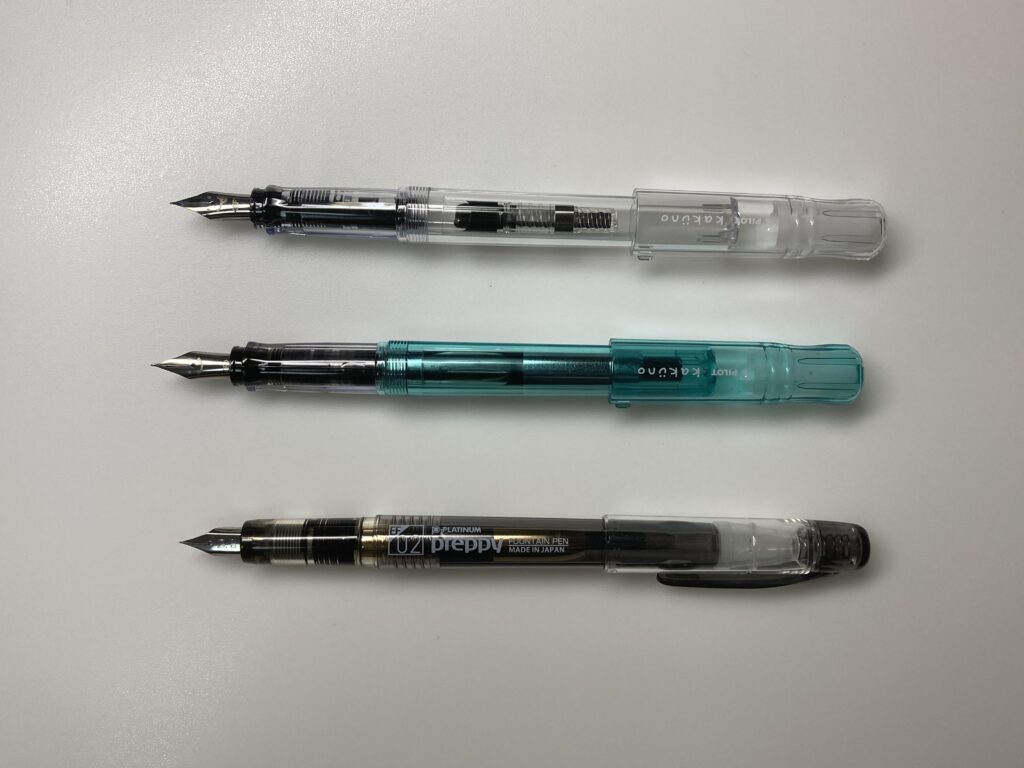
Fountain pens contain ink within their barrels and deliver it to the nib through capillary action. Once filled, they allow for prolonged use without the need for frequent refilling.
The nib tips are made of durable metal, known as the “pen point.” The thickness of lines varies depending on the nib size and shape. The two most commonly used types in pen drawings are:
- Fine (F)
- Extra Fine (EF)
Even with the same “F” or “EF” marking, the thickness may vary between different fountain pen brands.
Advantages:
- Long-lasting with ink refills
- Smooth writing experience
- Portable
Disadvantages:
- Limited nib options
- Susceptible to damage under strong pressure
- Easily damaged if dropped
Recommended Fountain Pens:
- Pilot Kakuno Extra Fine (EF)
- Pilot Kakuno Fine (F)
- Platinum Preppy 0.2mm Extra Fine (EF)
Pilot Kakuno Extra Fine (EF)
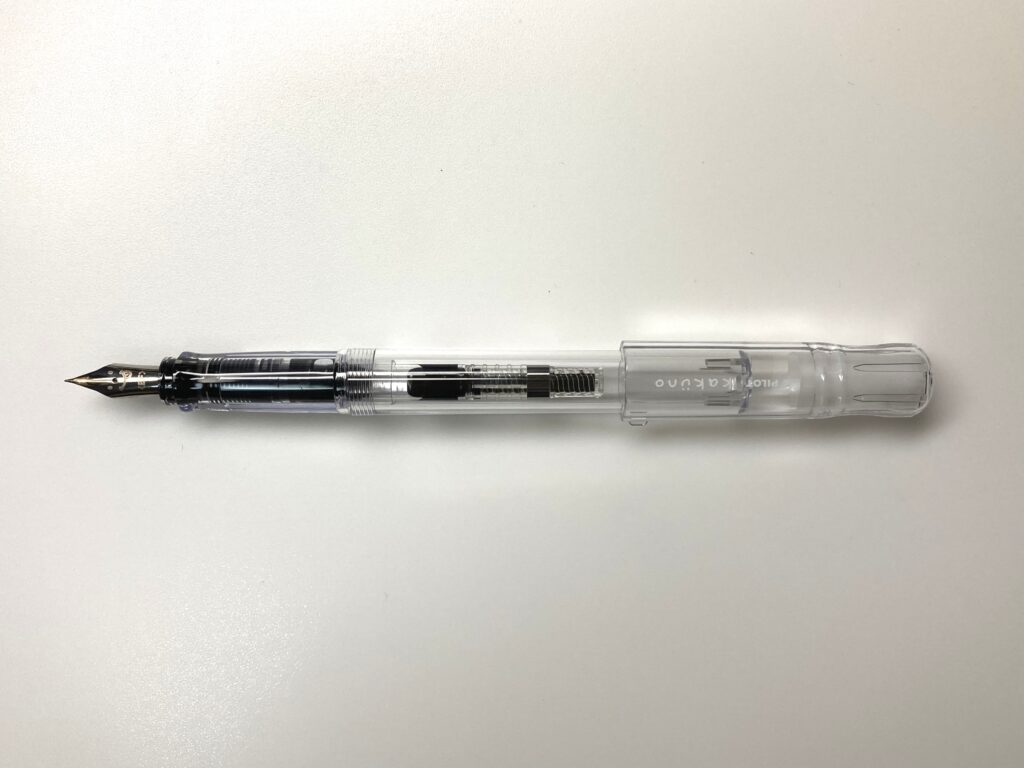
A beginner-friendly, easy-to-use fountain pen priced at around 1,100 yen (excluding tax: 1,000 yen). It creates very fine lines, making it ideal for detailed drawings.
Artworks created using Kakuno (EF)
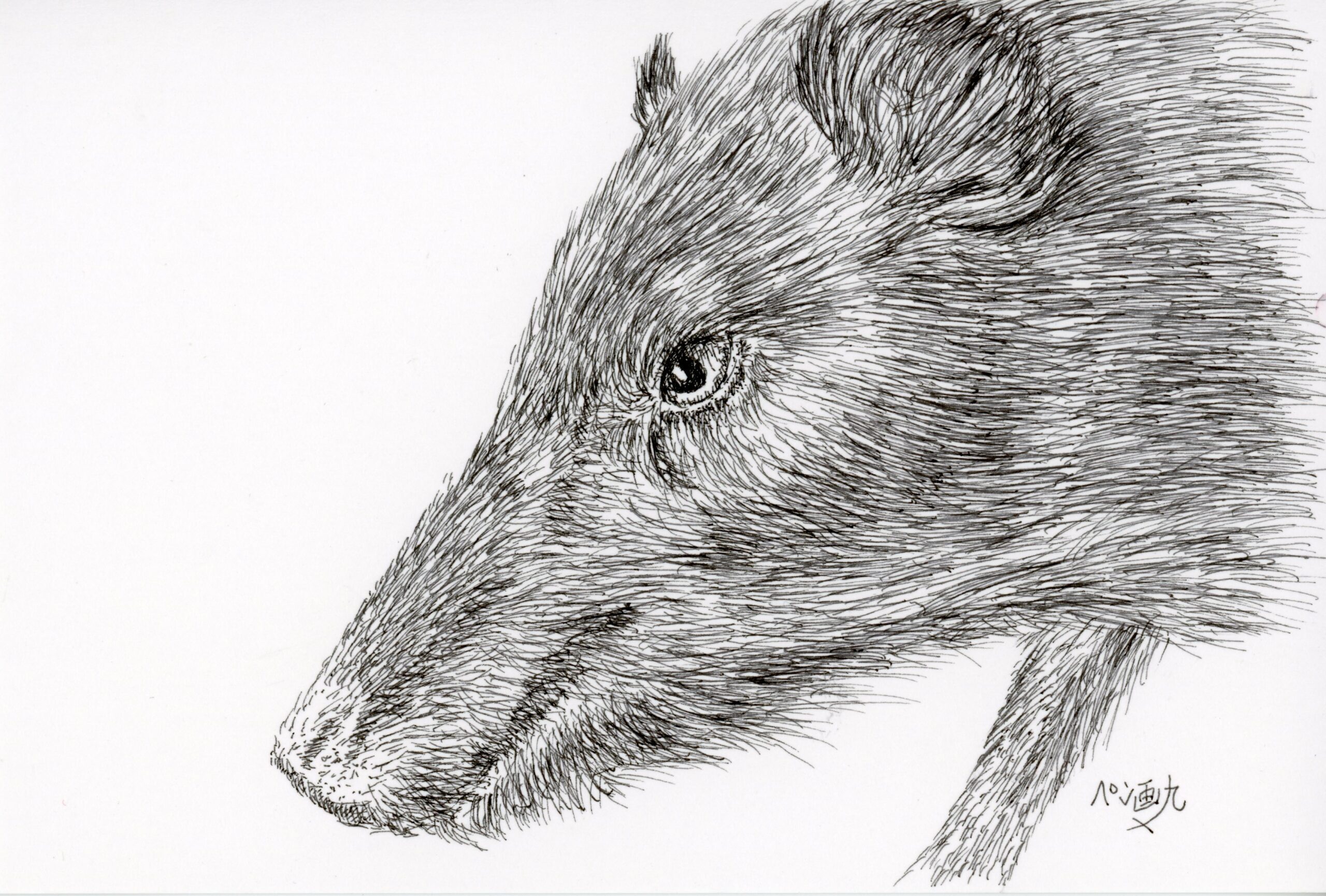
Pilot Kakuno Fine (F)
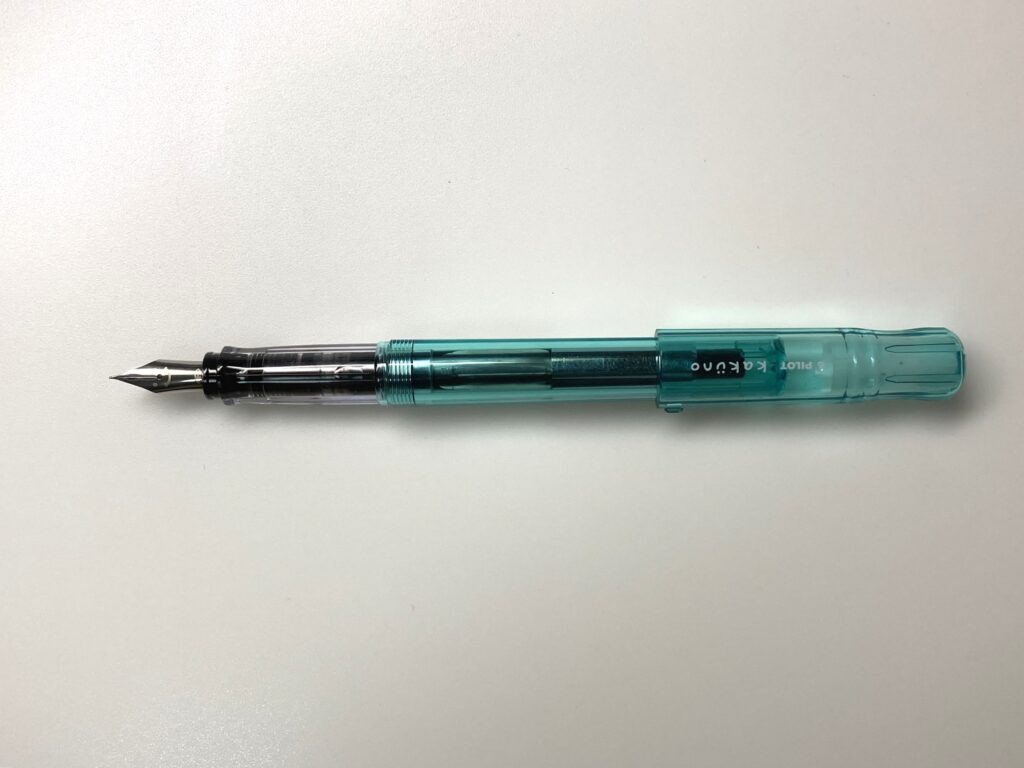
Similar to the EF version but produces slightly thicker lines, making it suitable for sketches.
Artworks created using Kakuno (F)
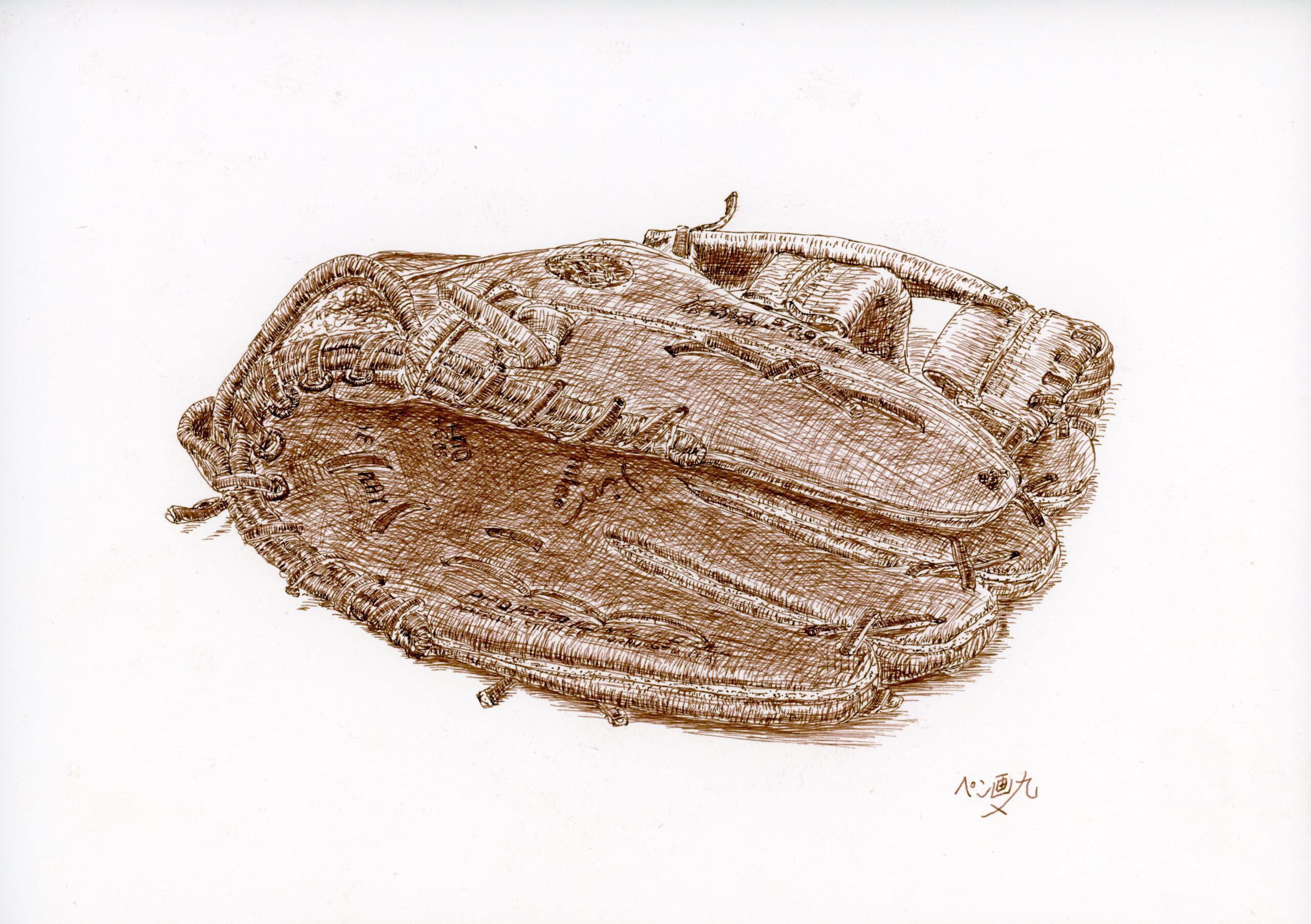
Platinum Preppy 0.2mm Extra Fine (EF)
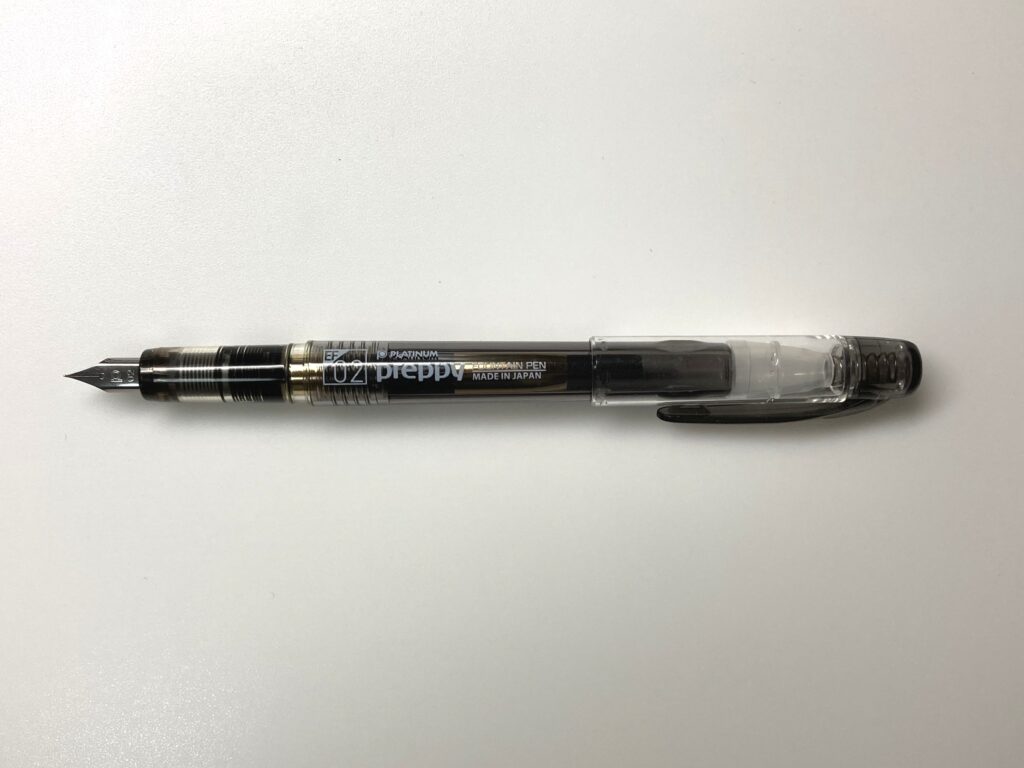
Platinum Preppy 0.2mm Extra Fine (EF) A budget-friendly fountain pen priced at around 440 yen (excluding tax: 400 yen). It features a special cap mechanism that prevents ink from drying for up to a year when closed. Its EF nib is slightly thicker than Pilot’s EF, making it suitable for both detailed drawings and sketches.
Ballpoint Pens
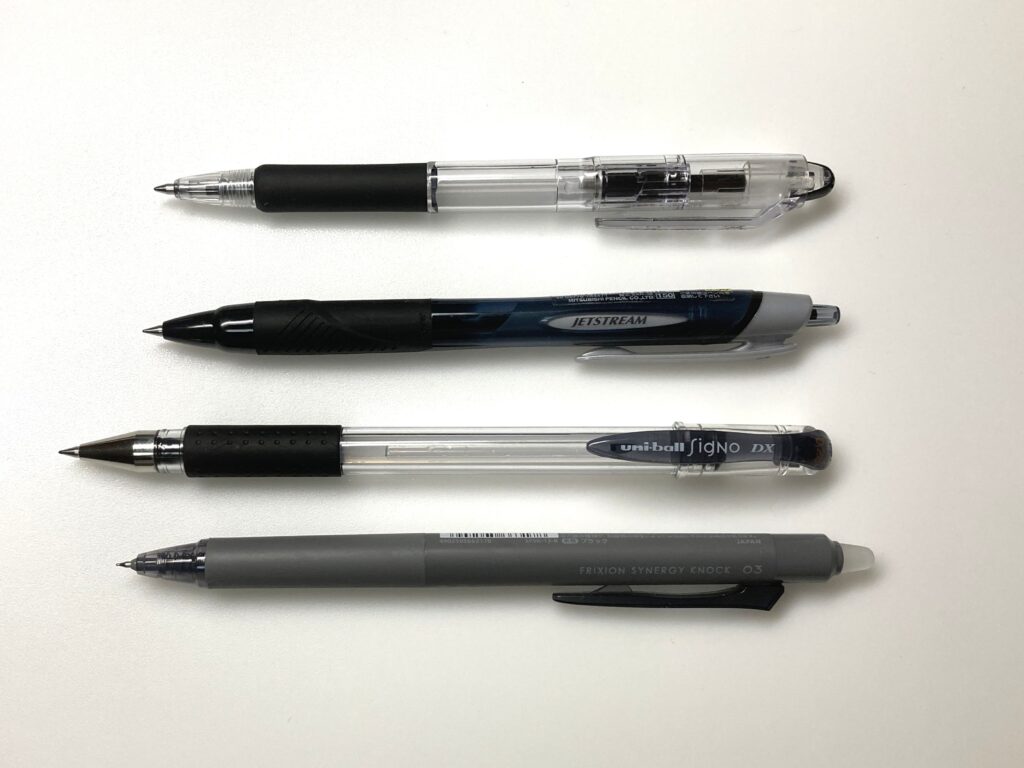
Ballpoint pens have a small metal ball at the tip that rotates to transfer ink onto paper. As ink accumulates at the tip during use, clumps can form, requiring frequent wiping with tissue.
Types:
- Oil-based ballpoint pens
- Gel ink ballpoint pens
- Erasable ballpoint pens
Advantages:
- Affordable and widely available
- Portable
- Durable
Disadvantages:
- Limited ink options
- Ink clumps require frequent wiping
- Ink flow may decrease as the refill empties
Oil-Based Ballpoint Pens
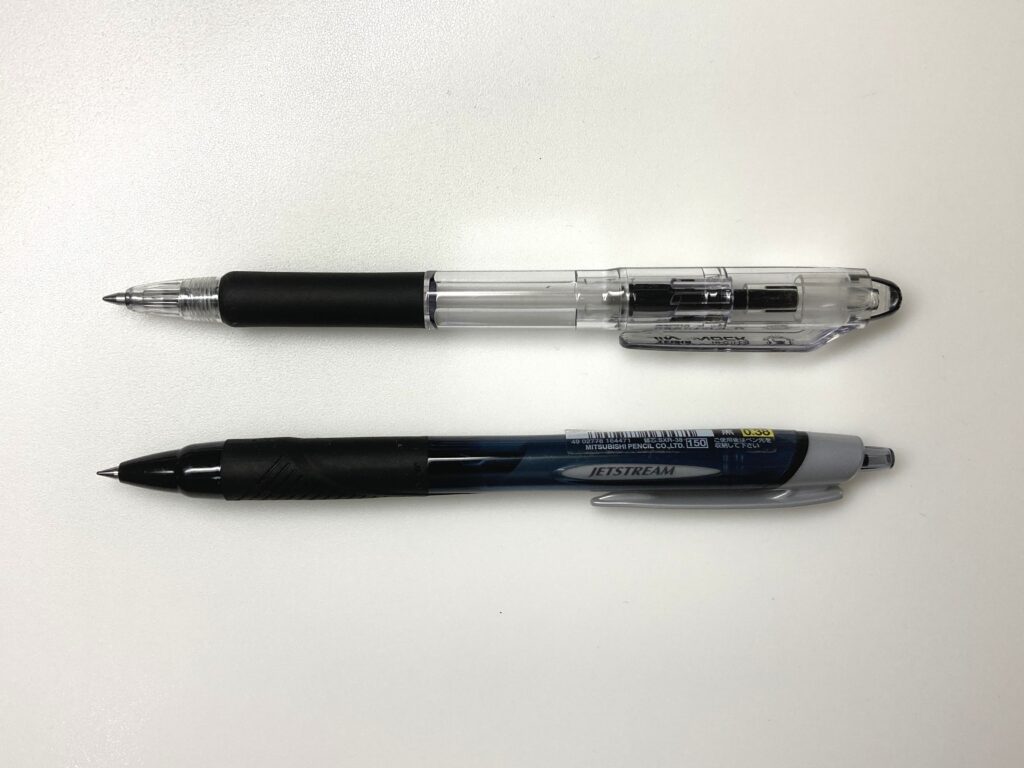
Oil-based ballpoint pens are common pens that use oil-based ink, which dries quickly and is highly water- and light-resistant, making them ideal for official documents and contracts.
Characteristics:
- High water and light resistance
- Suitable for official documents and contracts
- Can create light gray tones with gentle strokes
Artworks created using Oil-Based Ballpoint Pens
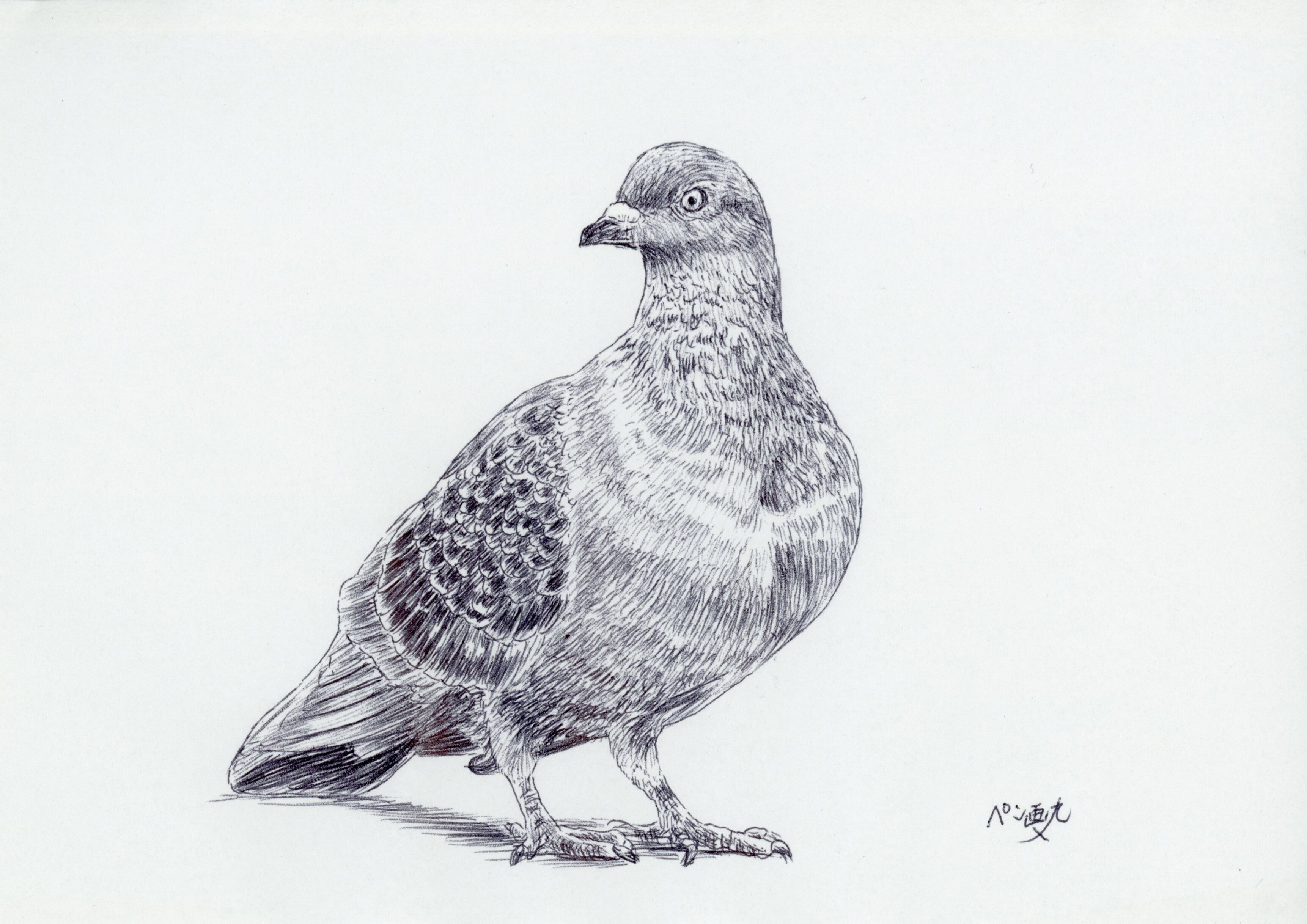
Gel Ink Ballpoint Pens
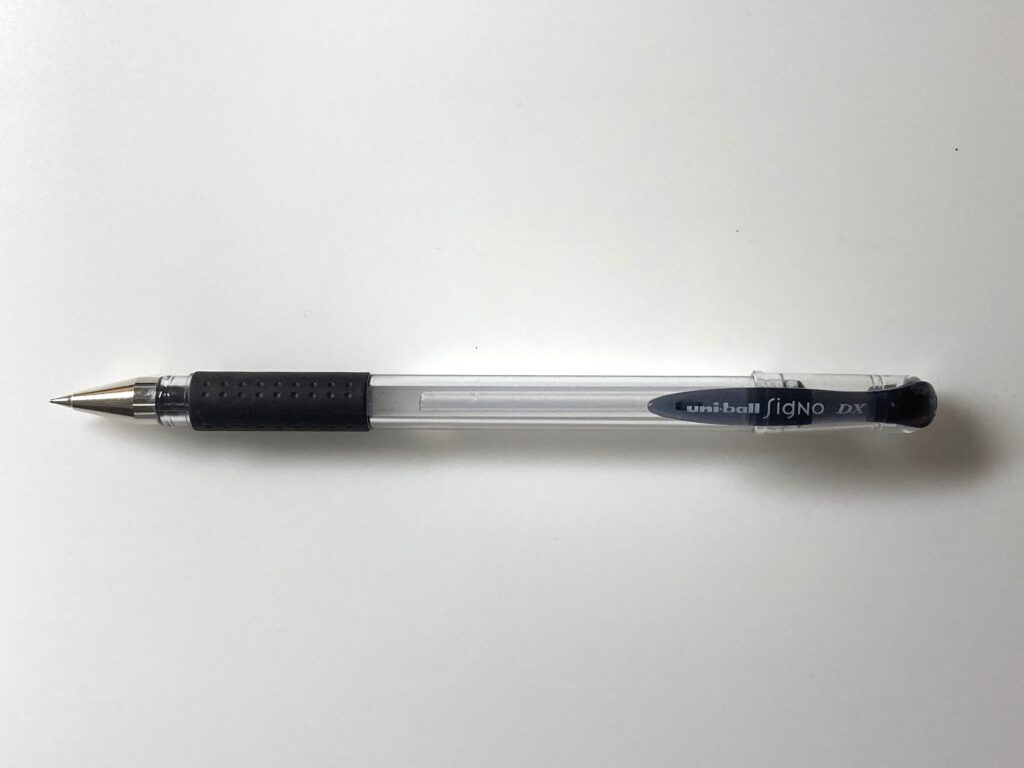
Gel ink ballpoint pens use gel-based ink, combining the advantages of oil- and water-based inks. They offer smooth writing, quick drying, and vibrant color options.
Characteristics:
- Smooth writing experience
- Quick-drying ink
- Available in a wide range of colors
Artworks created using Gel ink ballpoint pens
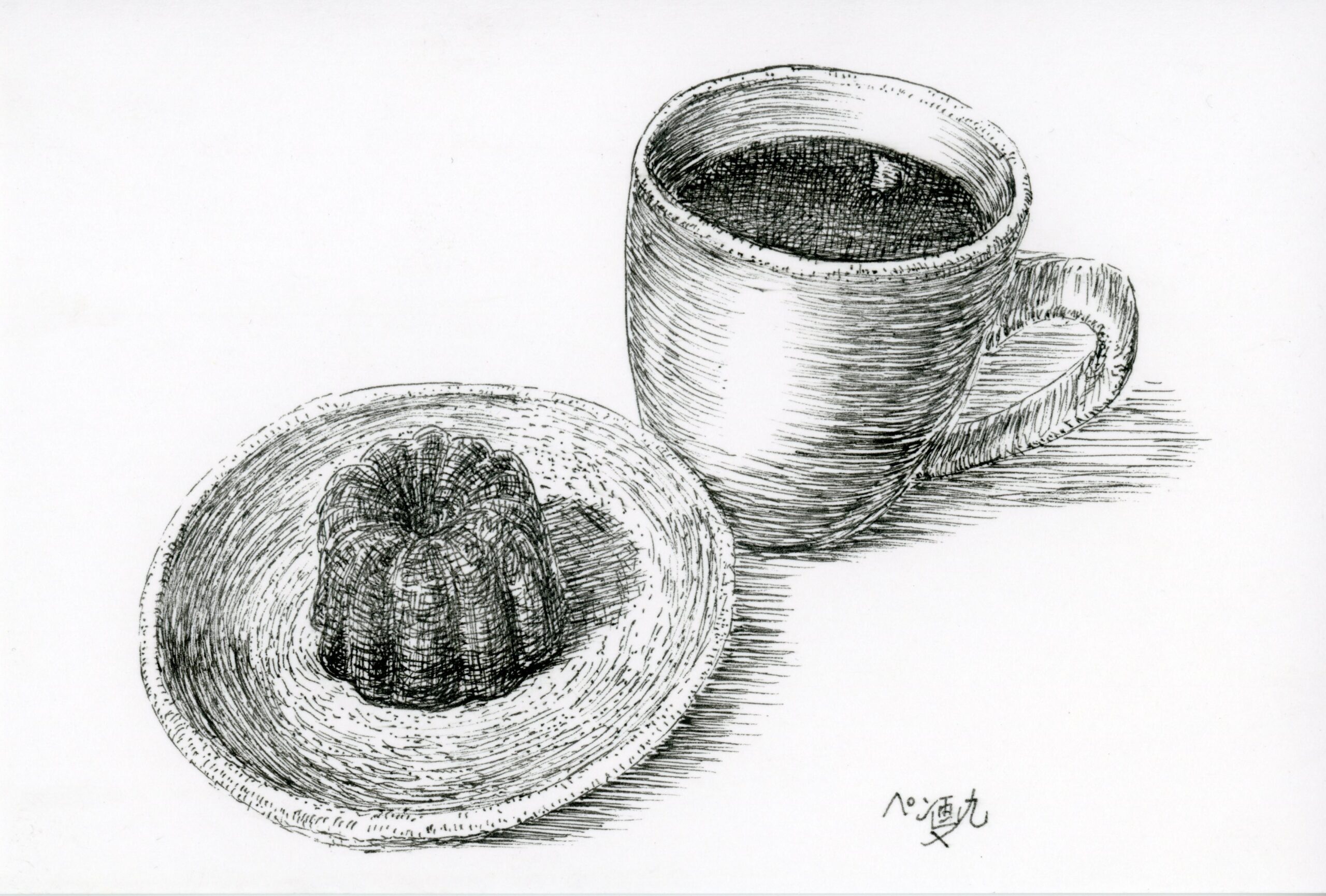
Erasable Ballpoint Pen (Frixion)
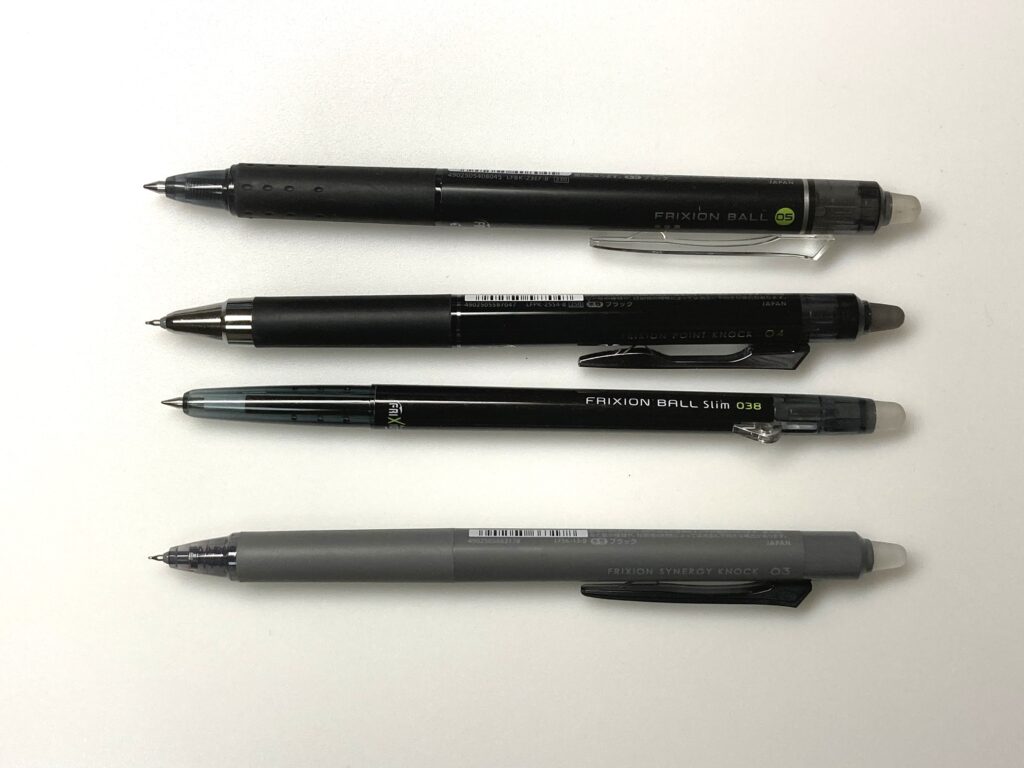
Erasable ballpoint pens use special thermosensitive ink that becomes transparent at 65°C and reappears at -10°C. Their greatest advantage is the ability to erase mistakes easily.
Characteristics:
- Erasable, making corrections easy
- Recommended for beginners
- Lines may disappear in high temperatures
Fine Liner Pens (Drawing Pens)
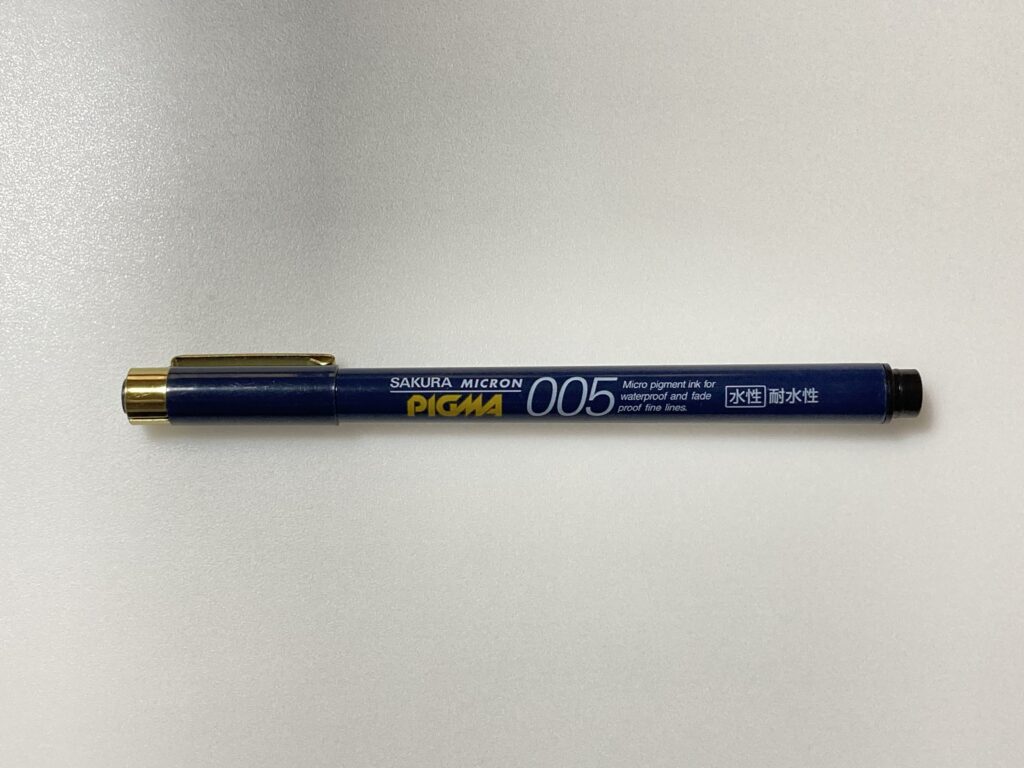
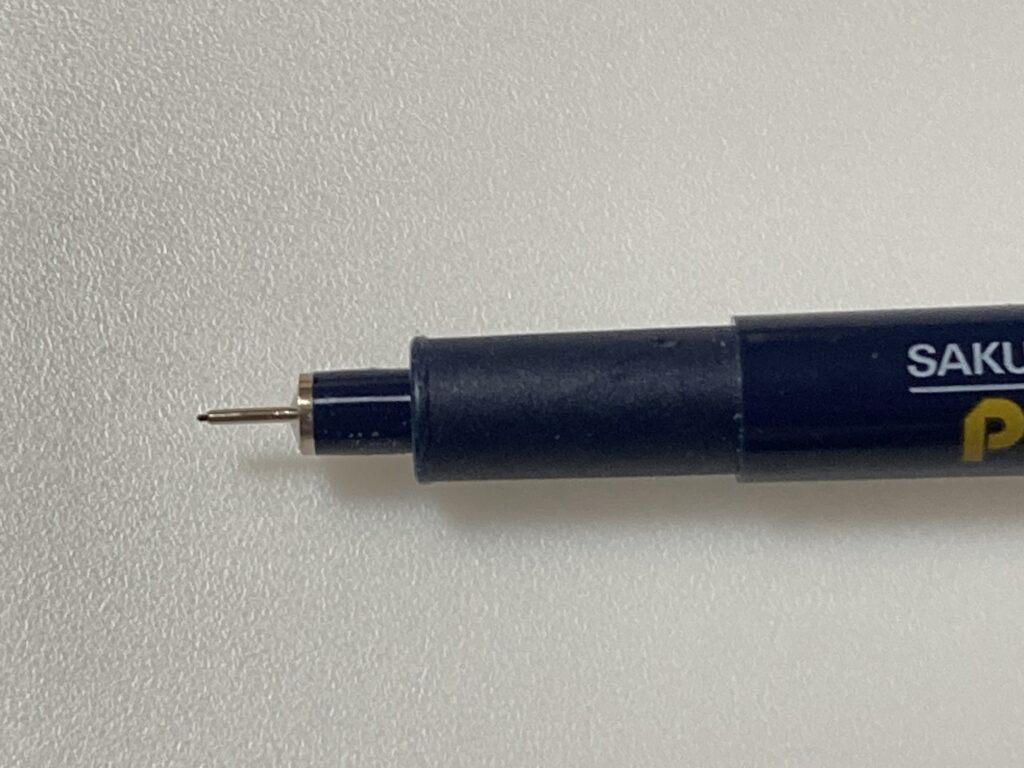
Fine liner pens come in various line widths, with ultra-thin sizes being particularly suitable for detailed pen drawings. Many professional manga artists and illustrators use them for their high quality and ease of use.
Pigma was the world’s first water-based pigment sign pen, developed in 1982. Unlike traditional water-based inks, it offers both water and light resistance.
Characteristics:
- Creates very fine lines
- Quick-drying ink
- Water-resistant
This concludes the detailed introduction of different pens used in pen drawing. I hope this helps you choose the right pen for your artistic needs!

